How to Prep for an Emergency with Food Allergies
If you have allergies, prepping for an emergency situation is a little bit different than it is for someone without allergies. I know several people who have food allergies and I get asked all the time how they should try to prepare for an emergency. The truth is, it’s a lot more work to prep for someone with allergies than for someone without allergies, however, it’s worth doing the work now so you’re prepared later. You’ll want to check out these tips for how to prep for an emergency with food allergies. Stay tuned to FoodAllergy.org for up-to-date information on this topic.
Items I Recommend:
- Ball Pint-Size Wide-Mouth Mason Jars
- FoodSaver
- FoodSaver Jar Sealer Accessory Hose
- Dehydrator
- Emergency Washing Unit
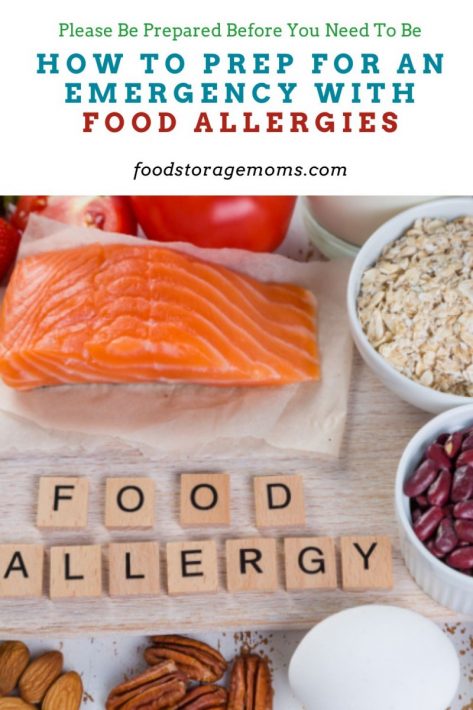
What are food allergies?
A food allergy is when your body has a reaction to a certain food or group of foods. This can happen right after you eat the food, or it may take a few hours for the symptoms to start. Symptoms of a food allergy can range from mild (such as hives or itching) to severe (such as trouble breathing or swelling in the throat).
The Top Food Allergies
The first step in prepping for an emergency when you have allergies is to know what your allergies are. The most common food allergies are peanuts, tree nuts, milk, eggs, soy, wheat, fish, and shellfish.
If you are allergic to any of these foods, it is important to make sure that you always have safe options available for you in case of an emergency. That means keeping safe, allergen-free food with you at all times, and knowing where you can find safe food in an emergency situation.
Allergy Action Plan for an Emergency with Food Allergies
If you have allergies, it is also important to create an allergy action plan. This is a plan that outlines what you should do in case of an allergy attack.
Your allergy action plan should include information such as a list of your allergies, what symptoms to look for, what to do if you have a reaction, and who to contact in an emergency. You should also keep your allergy action plan with you at all times so you can reference it in an emergency. It is particularly helpful to be able to pass this information to your health care provider when asked, it could save you lots of grief, and possibly your life. Why You Need Emergency Contact Information
Stocking Up on Allergen-Free Food
In an emergency situation, you may not be able to find safe, allergen-free food if the stores you rely on are closed, or they have run out of the foods you need. That is why it’s important to stock up on allergen-free food ahead of time.
There are many allergen-free food options available, so you should have no trouble finding food that is safe for you to eat. Some allergen-free food options include:
You can also find allergen-free versions of many common foods, such as allergen-free bread, allergen-free crackers, and allergen-free cereal.
When stocking up on allergen-free food, be sure to check the expiration dates and rotate your food regularly, just like you would your regular food storage items. You should also keep your allergen-free food in a cool, dry place, or in the fridge or freezer if directed by the supplier.
Does the Red Cross give allergen-safe foods?
If you are staying in a Red Cross shelter, they will have allergen-safe foods available for you. However, make sure you have a small emergency supply ready because it can take a while for them to have the allergin-friendly meals ready. Be sure to let them know your allergies when you check in so that they can accommodate you.
What if I need my medication?
Be sure to pack enough of your medication(s) to last for at least a week in your personal emergency kit. You may also want to consider getting an extra prescription filled and keeping it in a safe place! 35 OTC Medications You Should Store
Companies That Sell Allergy-Friendly Prepared Food Kits
Being prepared for an emergency is always a good idea, but it is especially important if you have allergies. There are many companies that sell allergy-friendly food kits so you can be sure to have safe, allergen-free food when it’s needed most.
Some companies that sell allergy-friendly food kits include:
Mountain House
Mountain House is a company that sells allergy-friendly food kits. They offer pre-made meals that are free of peanuts, tree nuts, milk, eggs, soy, wheat, fish, and shellfish.
Valley Food Storage
Valley Food Storage is another company that sells allergy-friendly food kits. They offer a variety of allergen-free food options, including freeze-dried and dehydrated foods.
Larabar
Larabar is a company that sells allergen-free food bars. Their bars are free of peanuts, tree nuts, milk, eggs, soy, wheat, fish, and shellfish.
Make Your Very Own Allergy Friendly Food Kits
You can also make your own allergy-friendly food kits. This is a great option if you want to be sure that you have safe, allergen-free food in an emergency situation, but you don’t want to spend a lot of money. How to Properly Store Food for Long-Term Storage
Dehydrate Safe Foods For Long Lasting Storage
One way to make your own allergy-friendly food kit(s) is to dehydrate safe foods. This is a great option because it allows you to store food for a long period of time without the need for refrigeration. Several Ways To Dehydrate Food
Some foods that can be safely dehydrated include:
You can dehydrate foods using a dehydrator or the sun. If you are going to use the sun, make sure that you put the food in a place where it will not be exposed to animals or insects.
Freeze Dry Allergy Friendly Foods
Another option for making your own allergy-friendly food kit is to freeze-dry foods. This is also a great option because it allows you to store food for a long period of time without the need for refrigeration. 5 Freeze-Dried Food Items I Recommend You Store
Canning Allergy Friendly Foods
Canning is another option for making your own allergy-friendly food kit. This is a great option because it is a time-tested way to prepare the foods you need for a long period of time without the need for refrigeration. Home Canning-Important Do’s and Don’ts
Some foods that can be safely canned include:
- Fruits
- Vegetables
- Meats
- Soups
- Stews
There are two methods of canning: water bath canning and pressure canning. Water bath canning is the simplest method and can be used for high-acid foods, such as fruits and tomatoes. Pressure canning is a more complex method, but it can be used for low-acid foods, such as vegetables and meats.
Final Word
When it comes to being prepared for an emergency, it is especially important if you have allergies. There are many companies that sell allergy-friendly food kits so you can be sure to have safe, allergen-free food in an emergency situation. You can also make your own allergy-friendly food kit(s) by dehydrating or freezing foods. Canning is another option for making your own allergy-friendly food kit(s). Whatever you decide, don’t get overwhelmed, you can do this.
If you have allergies and have put together a quality food storage plan to support that effort, please let me know and I’ll pass your ideas on to my readers. May God Bless this world, Linda
Copyright Images: Food Allergies AdobeStock_155822302 by anaumenko

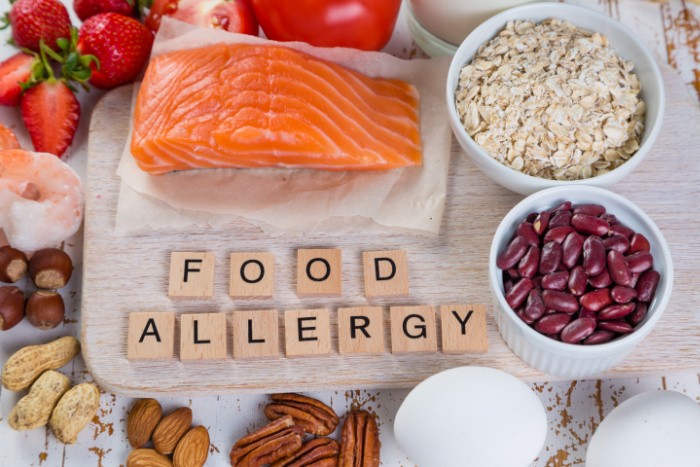

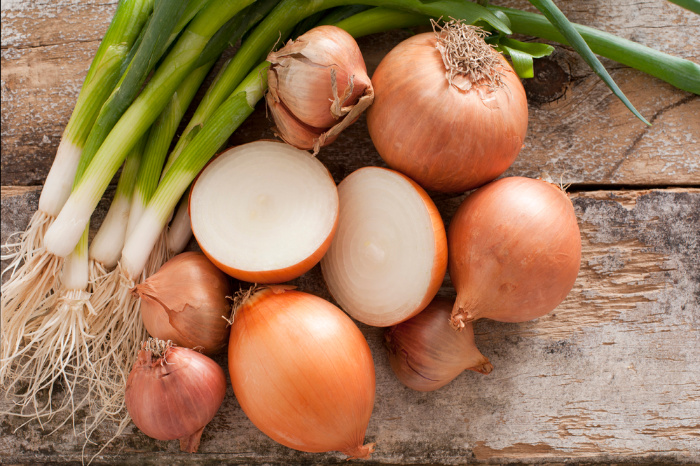
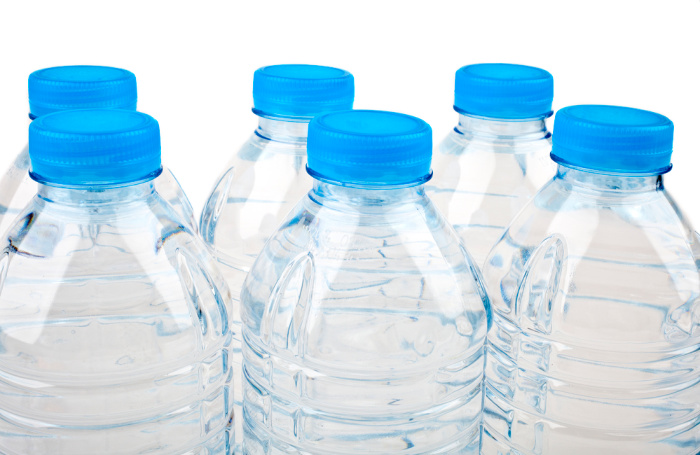


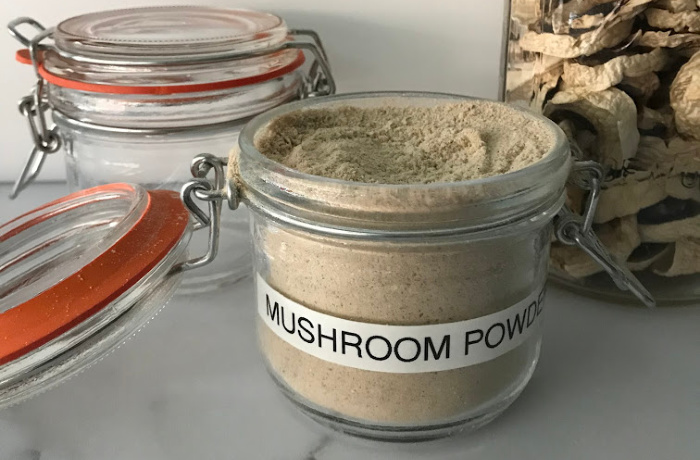
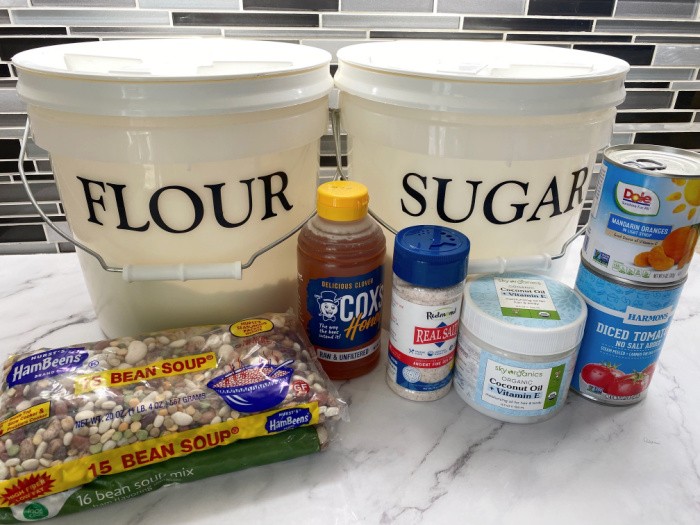
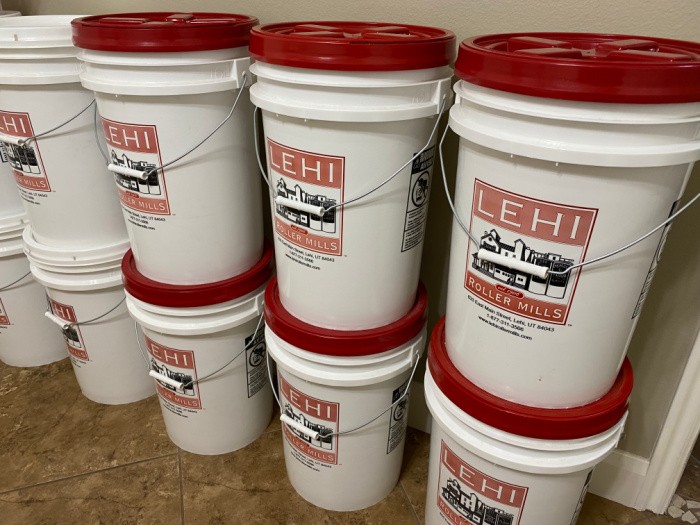
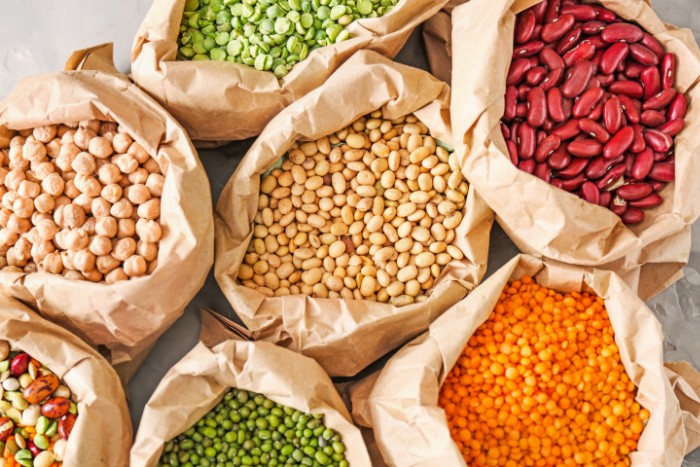
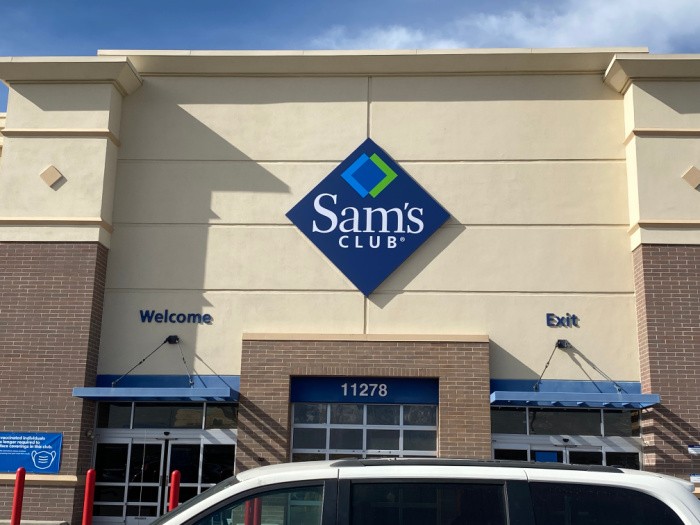
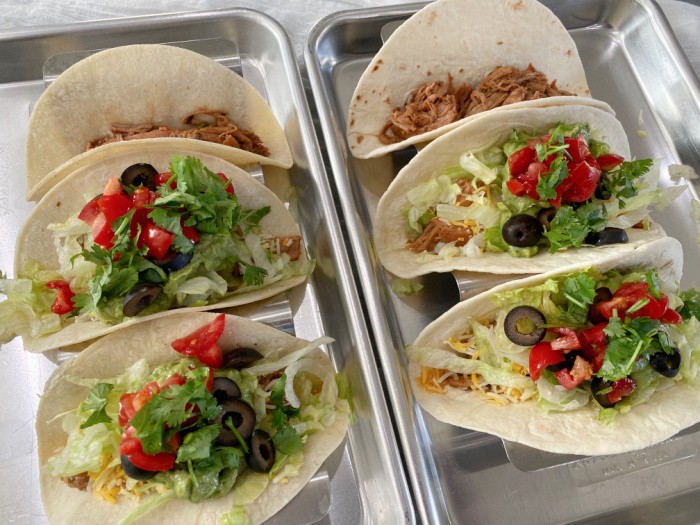

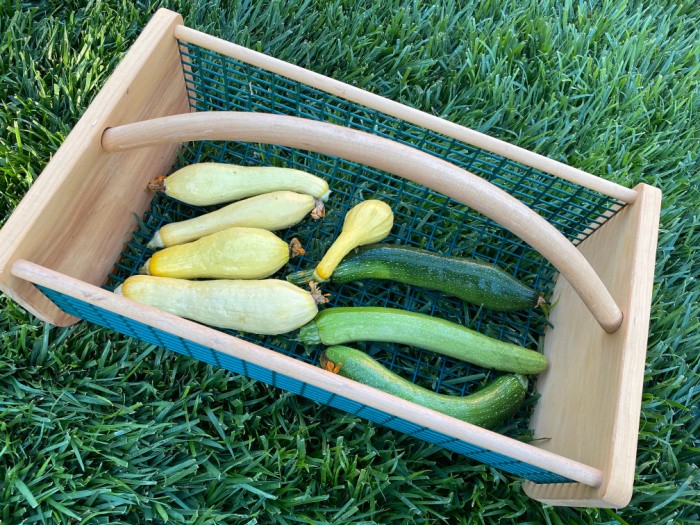







Linda,
We are fortunate in that no one in our family has food allergies. Canning your own food is the best advice anyone can give. and one of the best skills to learn.
Vacuum sealing and freezing is also an excellent option, but I no longer trust food saver sealers or bags. None of the food savers I’ve had lasted more than two years and I had a lot of problems with their bags losing their seals. My current vacuum sealer is a cheap Nesco American Harvest VS-12. While it doesn’t work as well as it did when it was new four years ago it still does the job. When it gives up the ghost I’ll splurge for an Avid Armor Chamber Sealer USV20 and hope I won’t ever have to replace it.
I get my bags from either Mylar Bags Direct or Sorbent Systems. Both have proven far more reliable then Food Saver bags.
Right now I’m canning apple pie filling, applesauce and apple butter. One of my neighbors makes delicious cinnamon apple chips with her dehydrator. I have a dehydrator too but since she gets the apples from me I get a share of the chips she makes for free. In spite of the drought, I got the best apple harvest from my three trees I’ve ever had. Even the Galas have ripened earlier than normal. That tree was so loaded I lost a big branch in the last wind storm–my fault for not thinning it more.
Ray, I only got my Food Saver last summer as a gift. I’d had a small handheld thing for which I had to buy special ziploc bags. Um, after about 3 mos in freezer, the bags would Crack! I’ve had better results with the namebrand Food Saver ones(with my Food Saver) but I’m only using those for short term (about 3 -6 mos), precooked meats or to prevent freezer burn. I have yet to have a bag Crack on me like with the first ones. One big thing I noticed with the food saver pre-made bags is that if I re-use them, it’s dang hard to get a seal versus if I’m making the bag, cutting off the top, then washing and re-using. I currently have chopped hot peppers in what I call sleeves. I simply turned bag, made 3 partitions. I just cut into one of these made over a year ago and the habaneros were fine.
Hi Wendy, I love the bag being made into 3 sections! Love it! Linda
Hi Ray, oh my gosh, your apple trees are having a bumper crop!! I love it! I use my FoodSaver more on jars than bags. I love hearing what you canning!!!! Linda
Ray, there is a you tube channel with a etsy store.Rain Country, they sell vacuum chambers,that her hubs makes… and Heidi explains how each size works,comes apart… and goes back together. The big one works on half gallons. and works with a brake bleeder, for off grid use. If you can get one from them, (there is a waiting list).. making own- could be an option for “handy” people.It would be a great tool. Theirs also has the ability to work with commercial vacuum machines that have hose attachment.
Thanks for the heads up, Denise. I’ll check them out.
Correction to my post above. I get most of my vacuum sealer bags now from FoodVacBags.com. They come in thicknesses up to 7 mils, while most other bags are only 3-4 mils thick.
The 7 mil bags are useful if you want to vacuum seal anything with sharp points like King Crab legs, pasta or guns and ammo.
Hi Ray, thanks for the tip! Linda
Ray,
I went to FoodVacBags.com website and dug around. I could not find any information showing any 7 mil bags or the thickness of any of their bags. What am I missing? Could you perhaps post a link to those thick bags? I really could use some of those thicker bags for ammo. Thanks.
Hi Harry, I could only find 5 mils, I wonder if they’re sold out right now. Linda
Linda,
I looked all around their website and I saw a number of items that were “out of stock”. But, I could not find any items, even “out of stock” listed anywhere. I will do some searching around the web. Perhaps someone else has thicker vacuum sealer bags.
Harry, the outfit that sold 7 mil bags (in rolls so you could cut them long enough for a sub 44″ long rifle) was Mylar Bags Direct, but I just went to their site and it looks like they are having such supply chain issues they no loner carry those rolls. They still have “stacker” bags, but those aren’t 7 mils thick. (They are great for storing flour, rice, etc).
However, Sorbent Systems does still have 7 mil bags that would be good for ammo. They don’t have the rolls that could handle an entire rifle though (unless it was broken down to less than 30″). There’s no guarantee these bags would work well with your vacuum sealer as they appear to work with some but not with others. I only get bags that are 11″ wide at most since that’s the widest that will work with my Nesco sealer. Here’s a link:
https://www.sorbentsystems.com/ironshield.html
Ray,
Thanks so much. I will order some of those. Will be great for ammo as well as my Henry AR-7 Survival Rifle. It is only 16 inches when broken down and stored in the stock. Great little rifle. Have a great day. Hope you are getting some rain. Here in the Texas Hill Country, we had .75 inches early in June and absolutely zero since them. Hot, dry and dusty.
Hi Harry, I love our forum here, we all help each other! Linda
Hi Ray, thanks for sharing the links. Linda
Yes, even though we have never met face to face, in addition to you, I feel like I have a number of other friends here. We all need to help each other as much as we can via the web during these extremely trying times.
Hi Harry, I totally agree! We all need to help each other!!! Linda
This information is something everyone should know. I have a 6 page allergy list single typed and when one doctor saw how many allergies I had he told me I was allergic to modern life which is a honest to goodness medical diagnosis listed in my medical record. I have to read every can, jar or bag I want to buy before even buying it. As you can imagine it makes for a long shopping trip. I even have to make sure the produce I buy has nothing on it that can cause a allergic reaction because they can cause Anaphylactic Shock if I eat them. I am blessed with good friends at church who when we have a church dinner if they made something with something I am allergic to they will tell me before the meal.
Hi Jackie, wow, that would be so hard to have that many allergies!! The fresh fruits and vegetables would be so tricky! You can read what’s in packages or cans but fresh food is a little scary. I’m glad you have church members that are kind to let you know what is in the recipe. Linda
Many decades ago my younger brother almost died of celiac disease. The way the doctors described it to my folks was that he was basically allergic to wheat. Geez, he was almost 10 and had dropped in weight to 36 lbs. His favorite food was Wheaties! I don’t think a lot was known about celiac back then as the folks had been bringing him to our small town doctor for quite awhile? They ended up bringing him to the Big Town hospital ER. He was admitted but it still took almost a week before getting this diagnosis. My folks didn’t know much about allergies except my mom got hay fever and one of my brothers would get sick from cows milk. Lol, my mom had him babysat by one of their renters and she gave him goat milk…no fussing, no constipation, no diarrhea. Um, yea, mom started buying goat milk from her for him. So, while my folks didn’t know about celiac, they understood a bit about food allergies, though it wasn’t even called it that back then.
Skip ahead to My son, born in ’82. I tried to nurse him but that didn’t work so well as I needed to go back to work fast. Fine, Similac used. Um, he’d go from constipation to the runs. Mom said: milk allergy. I got Isopril formula and that worked. Both my much younger son and grandson needed this as well. One of my sons now has no problem with milk but his older brother and my grandson still do.
As to the celiac with my brother? This allergy was difficult for him all his life. (He died from other things about 15 years ago.) Gosh, my brother could have pizza today with the crust made using cauliflower.
I feel bad for people with food allergies, but at least we know about them now. I priced allergen free foods and I was appalled.
Hi Wendy, wow, that is sad, no one knew what his problem was back then. I saw the allergen prices as well, they are so expensive. Crazy, Linda
My “NEW” allergies started with a change of medication dosage (from 5mg. to 10mg.) and an ambulance ride to the emergency room. I looked like I had been ‘punched’ in the face, lips and tongue swollen. I was blessed that I was able to go home after 6 hours of treatment. 2 weeks later, I was back in the emergency room, this time being admitted to the hospital because of peanut butter. Prior to that, I had not been allergic to peanut butter or any nuts, now I can’t eat any nuts especially almonds and hazelnuts and sesame seeds and oil. Talk about scary! I now have to read every label to make sure peanut butter is not used as a filler. I am now ready because I have to be with epi pens (4), 2 carried at all times, Benadryl, too. Be safe everyone and God Bless us all!
Hi Mildred, thank goodness you have epi pens! Oh my gosh, talk about scary! I eat peanut butter jam sandwiches every week. I’m so sorry you had to go through this. That is extremely scary!!! Linda
Linda, nightshades– tomatoes, potatoes, eggplant and all peppers, are major allergens for many people and can increase inflamation and therefore pain in arthritis and other conditions. Corn is another major problem for many. If you look at most of the “allergy free” food storage kits or items, they usually contain corn and potatoes and soy and tomatoes. Oils of soy, palm, coconut, canola, castor, and probably others can cause reactions also, as can many of the “gums” used as thickeners and stabilizers. Also, you mention oats as allergy free, but most oats are contaminated with wheat and oats may cause problems also for some. Complicated stuff! Stay well!
Jan, a contaminant in grains is pesticides and herbicides . even if grown organically the finisher sprayed on the kills the germ to make all harvestable at one time.it is a herbicide. in wheat and oats., some ppl, who can not eat grains in US, have traveled to countries where they don’t use this poison and are not allergic. the finisher kills gut bacteria . a liver kidney cleanse, followed by intestinal one then metallic cleanse and second liver/kidney cleanse in cycles , periodically…is often needed to get rid of these reactions. there have been ppl who got back to tolerance from these conditions. Need to seek out someone specializing in functional and natural care. most regular physicians will not address, but just give emergency pens… should get a rx for ampules and needles and syringes foe epinephrine(active ingredient in pens) for when pens are not available and find methods to do systemic cleanses and get those things while they are available.
HI Jan, thank you for catching that, I meant to add that to oatmeal. You really do have to look at the boxes!! If I had allergy issues I would not buy any meals that are in those buckets for food storage. You basically need to buy the individual foods you eat right now and make a meal with them. Great comment, Linda
In additions to allergens, in the same category is food intolerances. They may not be true allergies but make one ‘pay” later. Usually are digestive enzyme issues that are un or under diagnosed. It takes an incredible amount of enzymes to digest Beans and potatoes.
Some kinds of beans are easier to digest than others. It may vary by individual, easiest are black beans,and tolerance is less than what is considered a serving.Taking several times the suggested level is required for those who have little gastric enzymes, for digestion of these foods.There are Drs on you tube with info on this.
One of common allergies i did not see was MSG, which has had many name “updates”. including the single word “spice”. It is in most bullion that are commercially made- under one of their names. Allergic/intolerance of this food additive which has been disguised is possible to be anything from the mouth drawing, to full anaphylactic reaction.
Taking a low dose antihistamine can stop extreme reactions in some people…I have a DFM who has to take 60-90 mg allegra(generic) daily…( because of some kind of bite. mosquito, flea, tick, no-see-ums ,grasshopper? – just pick one.!) was suggested by MD, because of sudden hives in middle of night in a delayed reaction as much as 2 weeks later. we isolated it to bites because of the one bite that began the reaction would inflame and itch first. with wheals becoming obvious within 30 min. Benadryl, allegra in generic and herbal tinctures on the bites have kept from emergency room and morgue.
Hi Denise, I have delivered many bottles of Benadryl to families in my last neighborhood. Of course, I do not have epi-pens but one guy stayed out of the ER with my Benydryl bottle. I said get to the ER if you are having ANY issues. Linda